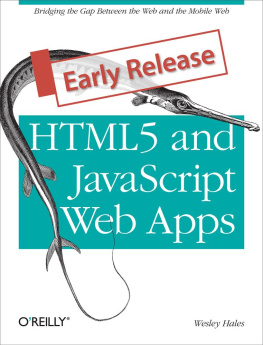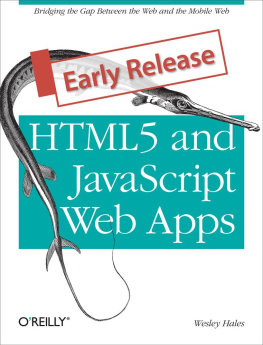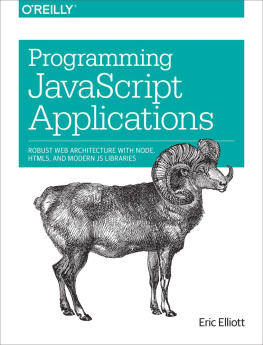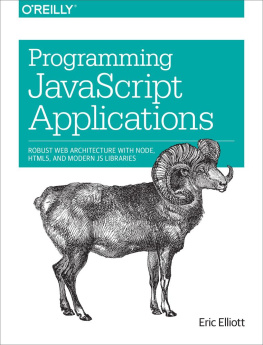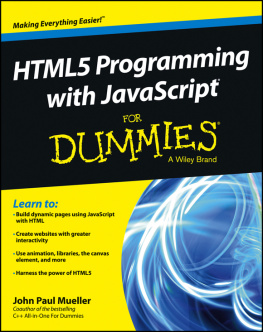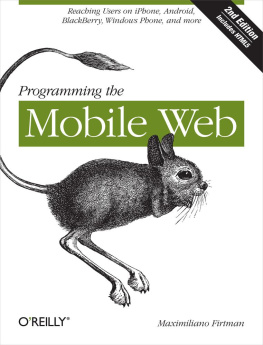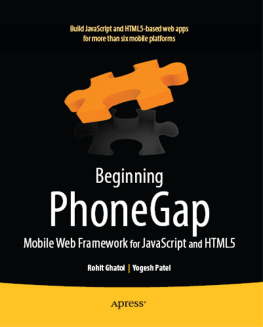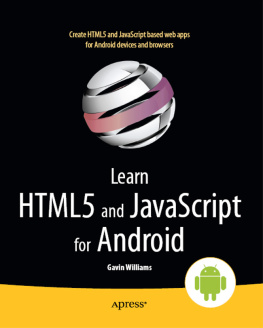Wesley Hales - HTML5 and JavaScript Web Apps
Here you can read online Wesley Hales - HTML5 and JavaScript Web Apps full text of the book (entire story) in english for free. Download pdf and epub, get meaning, cover and reviews about this ebook. year: 2012, publisher: OReilly Media, genre: Computer. Description of the work, (preface) as well as reviews are available. Best literature library LitArk.com created for fans of good reading and offers a wide selection of genres:
Romance novel
Science fiction
Adventure
Detective
Science
History
Home and family
Prose
Art
Politics
Computer
Non-fiction
Religion
Business
Children
Humor
Choose a favorite category and find really read worthwhile books. Enjoy immersion in the world of imagination, feel the emotions of the characters or learn something new for yourself, make an fascinating discovery.
- Book:HTML5 and JavaScript Web Apps
- Author:
- Publisher:OReilly Media
- Genre:
- Year:2012
- Rating:4 / 5
- Favourites:Add to favourites
- Your mark:
HTML5 and JavaScript Web Apps: summary, description and annotation
We offer to read an annotation, description, summary or preface (depends on what the author of the book "HTML5 and JavaScript Web Apps" wrote himself). If you haven't found the necessary information about the book — write in the comments, we will try to find it.
This hands-on book shows you how to work with HTML5, JavaScript MVC frameworks, and the latest W3C specifications to build mobile and desktop web apps that are widely supported across all browsers and devices. Youll quickly master building client-side applications with a loosely coupled backend infrastructure that supports offline clients.
Learn how to incorporate web storage, web workers, geolocation, Device Orientation, and WebSockets into your application architecture, using real-world examples. If youre familiar with server-side programming and understand the basics of HTML5, this book is for you.
- Assemble a coherent architectural whole from HTML5s complex collection of parts
- Gain a clear understanding of client-side architecture and the mobile first approach
- Design, create, and tune eye-catching and robust mobile web apps
- Explore how the top five JavaScript MVC frameworks interact with the server
- Learn best practices for setting up a raw WebSocket server
- Examine how sites such as Google, Twitter, and Amazon store data
- Use real-world methods for applying geolocation, and learn the pitfalls of various implementations
- Process images and other data in the background with Web Workers
Wesley Hales: author's other books
Who wrote HTML5 and JavaScript Web Apps? Find out the surname, the name of the author of the book and a list of all author's works by series.

